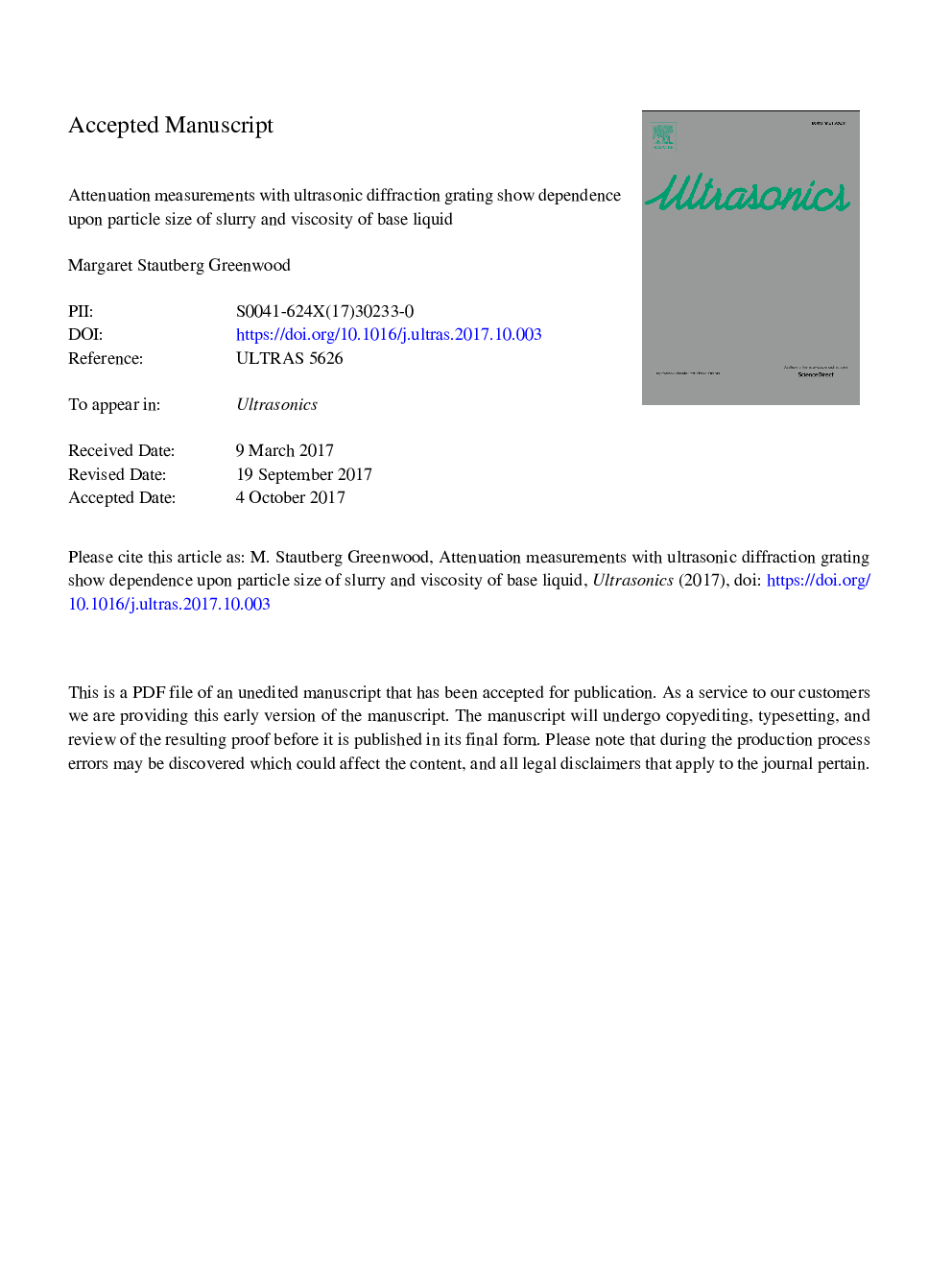| Article ID | Journal | Published Year | Pages | File Type |
|---|---|---|---|---|
| 8129966 | Ultrasonics | 2018 | 48 Pages |
Abstract
How can using an ultrasonic diffraction grating lead to slurry characterization? The diffraction grating, which is formed by machining triangular grooves on the flat surface of an aluminum unit, has send and receive transducers fastened to the unit at an angle of 30°. The ultrasonic beam strikes the back of the grating, in contact with the slurry, and reflects a beam to the receive transducer; mâ¯=â¯0 and mâ¯=â¯1 beams are transmitted into the slurry. The angle of the mâ¯=â¯1 beam changes with frequency and, at the critical frequency fCR, it reaches 90°. When fâ¯<â¯fCR, the mâ¯=â¯1 beam disappears, its energy is shared with all other beams, producing a peak in the receive transducer. The change in peak height with slurry concentration determines the attenuation; the frequency at the peak yields the velocity of sound. The attenuation has been measured for polystyrene spheres, ranging in size from 98â¯Âµm to 463â¯Âµm, and slurry concentrations up to 20â¯wt%. When the spheres are immersed in water, sugar water, or mineral oil, the attenuation measurements show the effect of particle diameter and the viscosity of the base fluid.
Related Topics
Physical Sciences and Engineering
Physics and Astronomy
Acoustics and Ultrasonics
Authors
Margaret Stautberg Greenwood,
